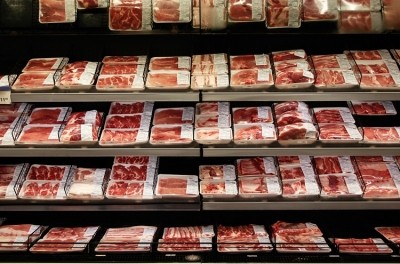Do Africans have an appetite for cultivated meat?

The cultivated meat and seafood scene is booming. Whereas just a few years ago, a handful of cell-based meat makers were operating in the space, the Good Food Institute’s (GFI) most recent annual report suggests this number has grown by 43% to 76.
The report also pointed to a record-breaking 2020, during which investment increased sixfold to $350m, and indicated that 80% of people in the UK and US are open to eating cultivated meat.
With the promise of cultivated meat’s ability to bring high quality protein – produced with fewer natural resources – to the masses, it is unsurprising the technology has extended beyond Europe, Asia and the US, and into Africa.
Without cell-based meat offerings yet being on the market in Africa, however, it is challenging to predict how consumers will react to bioreactor-grown meat. Which population segment is expected to be its early adopters?
Identifying first customers
Africa’s first cultivated meat start-up, Mzansi Meat Co., is particularly keen to know, commissioning North Mountain Consulting Group to profile the attitudinal and sociodemographic characteristics of early adopters of cultivated meat in South Africa.
The thinking is that by understanding the consumers most likely to buy cultivated products, the business will be able to market its products more effectively – for both initial sales and long-term societal adoptions.
The first products in Mzansi’s portfolio are a beef burger and a South African fresh sausage known as ‘boerewors’, both of which can be cooked on an open flame in accordance with the nation’s ‘braai’ barbecue and grill custom.
According to North Mountain, identifying ‘early adopters’ is important, as subsequent population segments ‘watch’ and ‘later begin to adopt’ once the innovation begins to normalise in society.
In the study, a sample population of 1,087 adult participants aged between 18 and 61 years were surveyed to determine the characteristics of ‘the typical early adopter’.
The typical early adopter
Findings revealed that the typical South African early adopter of cultivated meat could be described as young and a member of the Millennial or ‘born-free’ generations – reffering to South Africans born after the end of apartheid in 1994.
The early adopter is equally likely to be a man or a woman who speaks English and/or isiZulu. They are also likely to be Black and living in a city or town in the South African provinces of Gauteng or kwaZulu-Natal.
“This individual is likely to be politically moderate Christian who has graduated high school, is low-income, and is either full-time employed or unemployed,” noted the report authors. “In terms of their diet, they are an omnivore who currently consumes a medium amount of conventional meat – between 8-14 meals per week.” This group also prefers beef and poultry products above other species.
Willing to pay more for climate-friendly food?
The survey also indicated that early adopters are open to paying more for cultivated meat and envisions cultivated meat to make up a third of their future meat intake.
Specifically, nearly all of the early adopters (94%) were at least ‘somewhat likely’ to pay a higher price for cultivated meat than its conventional counterpart, with 51% saying they were ‘very likely’ or ‘extremely likely’ to pay a higher price.
These figures are significant when compared to the general population, 76% of which were ‘at least somewhat likely’ to pay a higher price, with just 30% very or extremely likely to pay a higher price.

North Mountain, on behalf of Mzansi, also sought to determine the reasons for purchasing cultivated meat amongst the early adopter segment.
A significant 91% of early adopters said they would buy cultivated meat because it is better for the environment, 89% said its contribution to local food security is a key factor, 88% responded because it does not harm animals, and 84% said because it contributes to wild animal conservation.
Eighty-four percent said because it is better for human health, 76% said because it contains no antibiotics, and the same percentage said because cultivated meat contains no pathogens. The general public held the same beliefs, but to a lesser extent.
Feeding the future
Overall, the analysis suggests a ‘high level’ of interest in cultivated meat among the South African population.
“This is interesting for us to find out,” Mzansi’s public relations officer Absie Pantshwa told FoodNavigator. “Those are the people who in the future will be hosting [meat-based] celebrations, and still consuming meat whether part of a traditional or social gathering.”
Mzansi is confident that young people will be leading cultivated meat adoption in South Africa, as they did in Singapore where the first cultivated meat product – Eat Just’s cultivated chicken ingredient – received commercial authorisation earlier this year.
“The first people to come out and try the cultivated chucking the first restaurant was a very young and very forward-thinking globally versed group of people,” said Pantshwa. “And that’s where we’re at as well.”


























